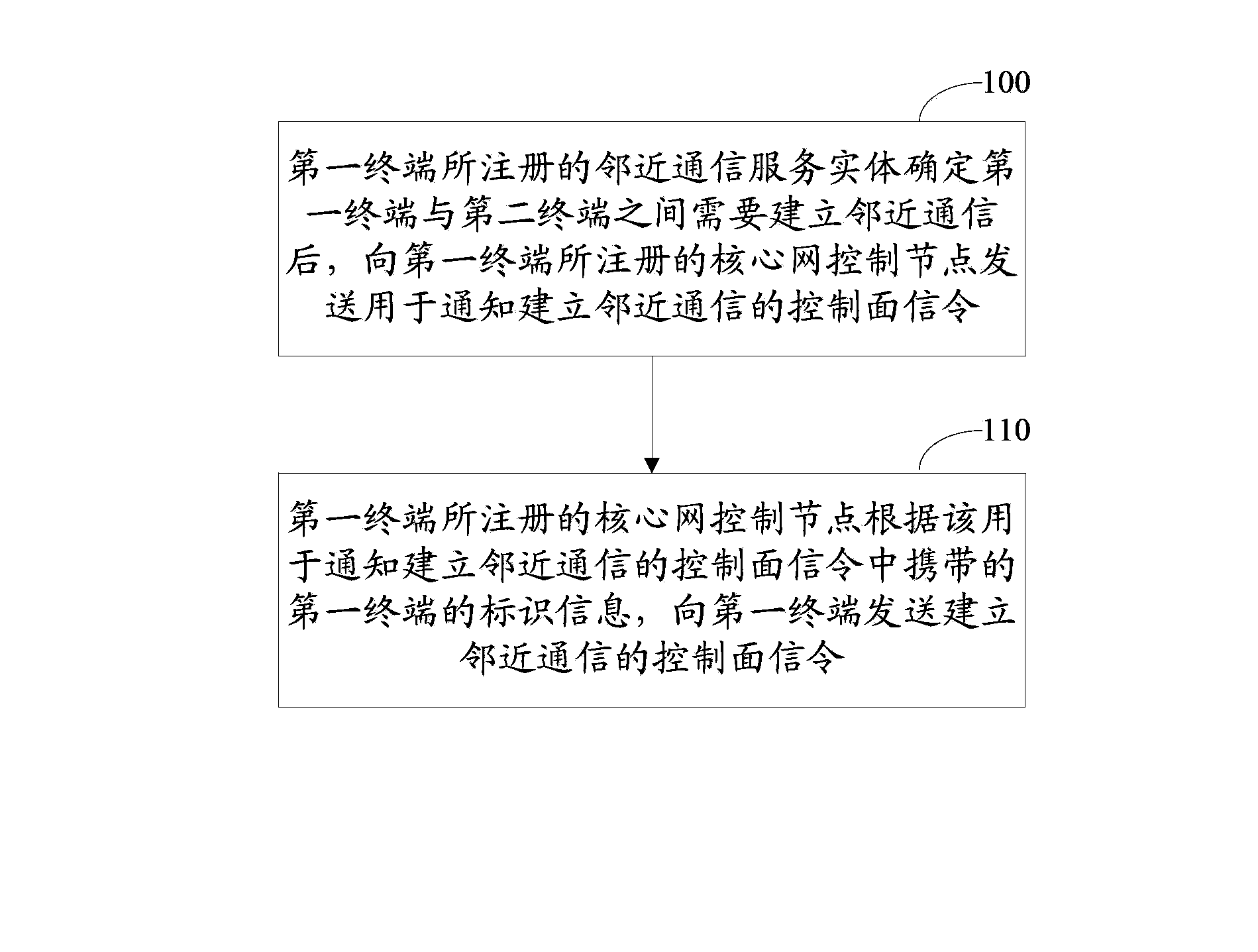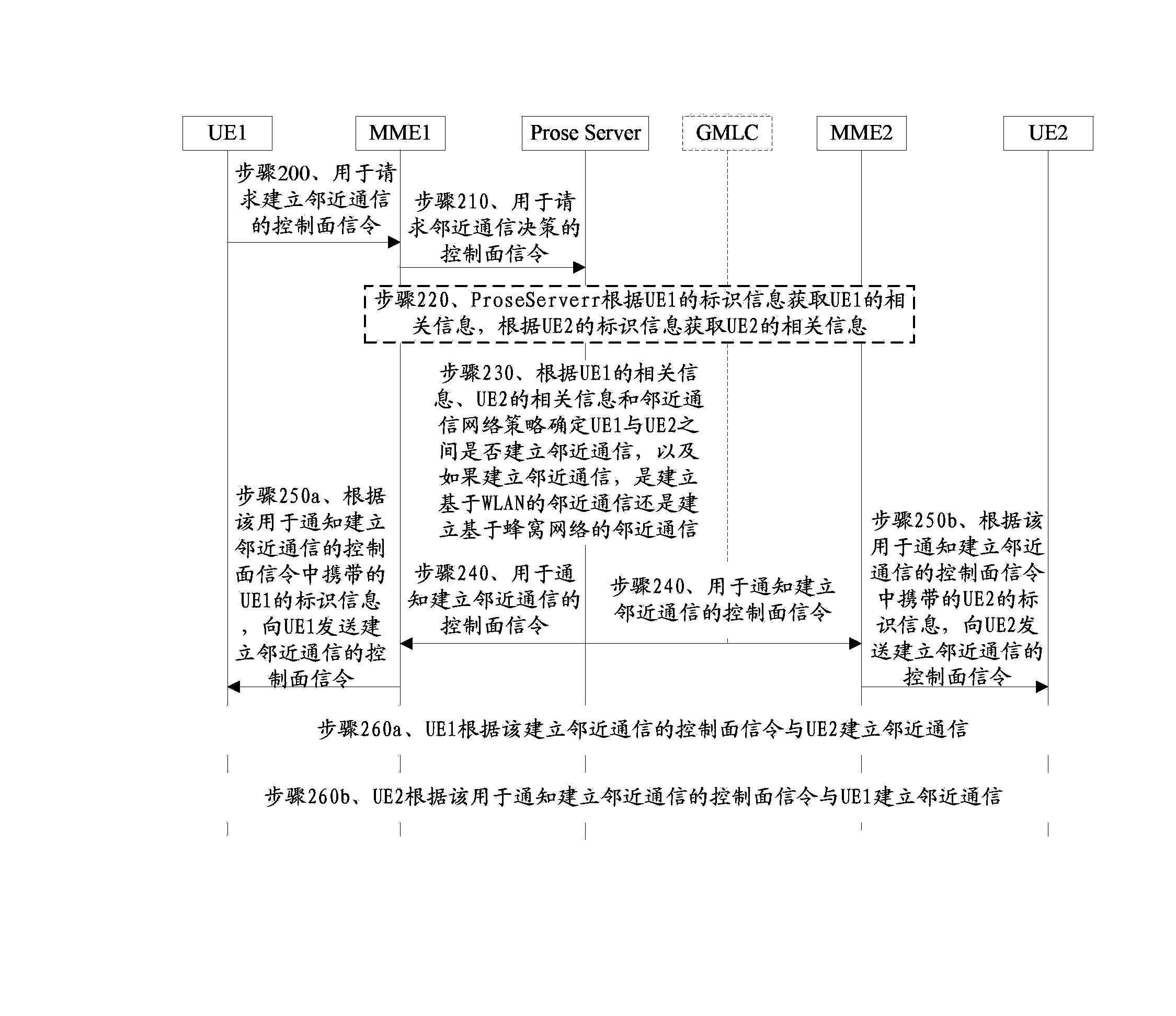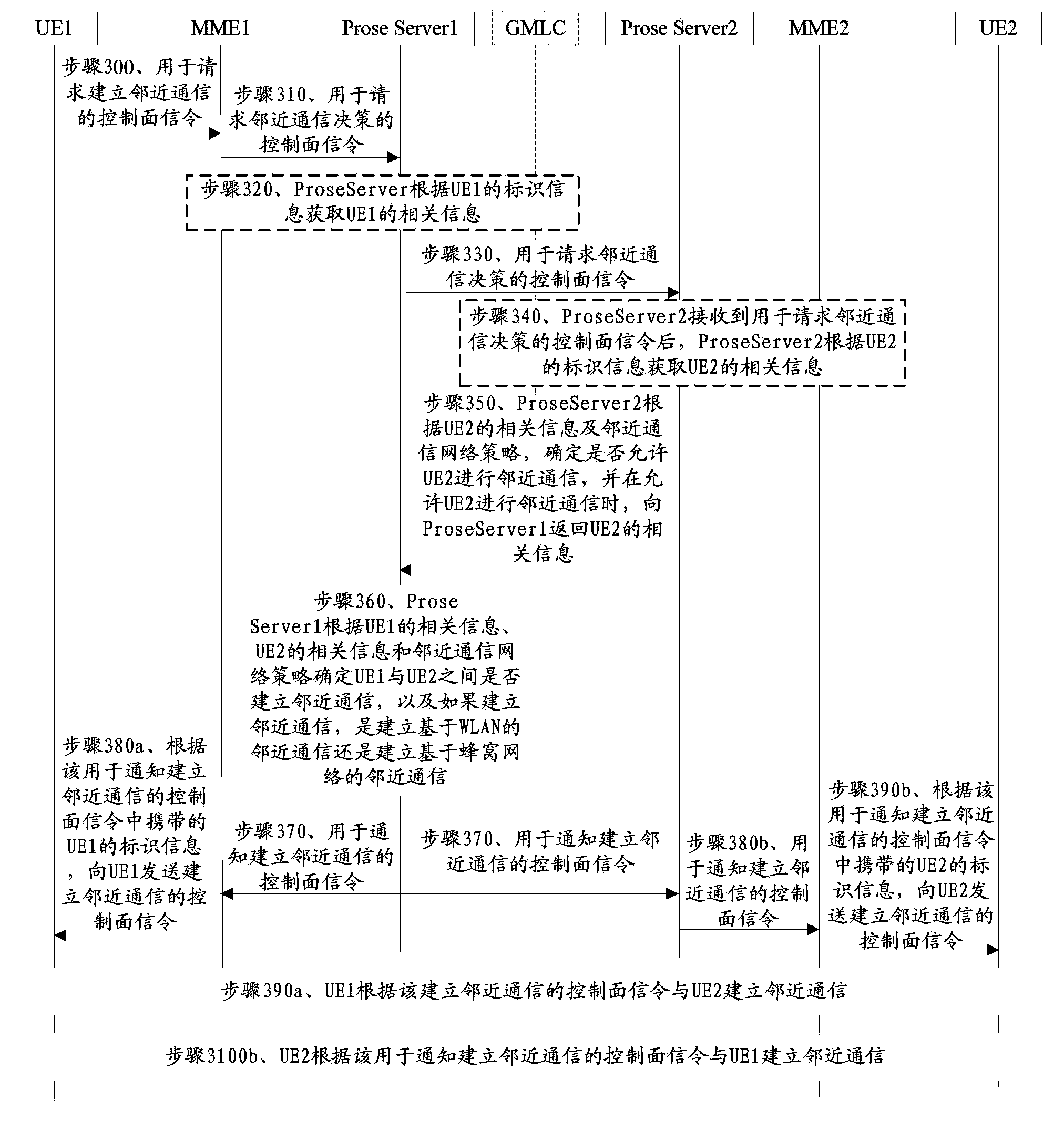Near communication establishing method and system
A technology of proximity communication and establishment method, applied in the field of communication
- Summary
- Abstract
- Description
- Claims
- Application Information
AI Technical Summary
Problems solved by technology
Method used
Image
Examples
Embodiment Construction
[0026] In the embodiment of the present invention, between the proximity communication service entity and the core network control node, and between the core network control node and the terminal, the establishment of proximity communication is realized by transmitting control plane signaling, and the establishment of proximity communication services based on the control plane is provided. implementation plan. The process of establishing proximity communication between the first terminal and the second terminal is described as follows on the side of the core network where the first terminal is registered: the proximity communication service entity registered with the first terminal determines that a proximity communication needs to be established between the first terminal and the second terminal. After the communication, the control plane signaling for notifying the establishment of Proximity Communication is sent to the core network control node where the first terminal is re...
PUM
 Login to View More
Login to View More Abstract
Description
Claims
Application Information
 Login to View More
Login to View More - Generate Ideas
- Intellectual Property
- Life Sciences
- Materials
- Tech Scout
- Unparalleled Data Quality
- Higher Quality Content
- 60% Fewer Hallucinations
Browse by: Latest US Patents, China's latest patents, Technical Efficacy Thesaurus, Application Domain, Technology Topic, Popular Technical Reports.
© 2025 PatSnap. All rights reserved.Legal|Privacy policy|Modern Slavery Act Transparency Statement|Sitemap|About US| Contact US: help@patsnap.com



